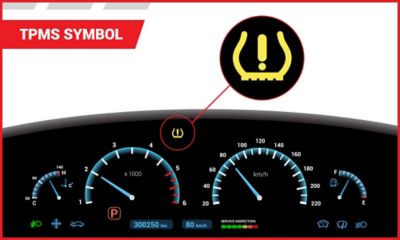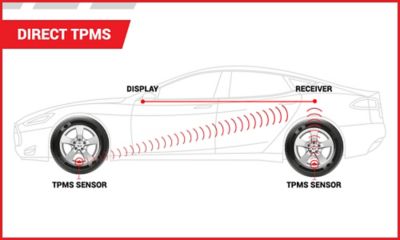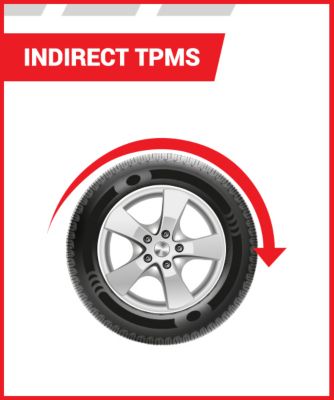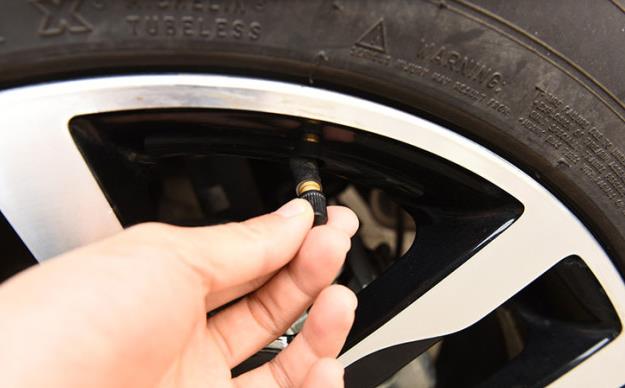TPMS: What Is It and How It Works
Properly inflated tires provide many benefits — prolonged tire life, gas conservation, cost savings and most importantly, increased safety while driving.
Low tire pressure has caused many serious accidents. As a response, the US government passed the TREAD Act — a cleverly formed acronym that stands for the Transportation Recall Enhancement, Accountability, and Documentation Act. Among other mandates, the TREAD Act requires vehicle manufacturers to equip all vehicles manufactured after 9/1/2007 with a Tire Pressure Monitoring System (TPMS) of some type.
TPMS: What is It?
TPMS is a network of sensors that warn you when one or more of your tires are under inflated and may be unsafe to drive on. If the system detects a problem, a low-pressure indicator symbol will light up on your dashboard. The symbol looks a bit like a horseshoe or a fishbowl with an exclamation point inside.
When you see this symbol, check the tire pressure on all of your tires with a tire pressure gauge, adding air where necessary, or have the tires serviced, as needed. The vehicle manufacturer's recommended tire pressure inflation information can be found in the owner's manual and on the driver's side door jamb, the gas tank hatch or the glove box door.
Although tire pressure monitoring systems are standard, not every TPMS works the same way. Let's talk about the advantages and disadvantages of each type.
Direct TPMS: How Does It Work?
Direct TPMS uses special sensors mounted within each tire. These sensors continuously monitor the air pressure levels, sending the information to a central control module to be analyzed. If the module determines that you have low air pressure in one or more tires, it triggers the TPMS light on your dashboard.
Because direct TMPS delivers actual tire pressure readings from inside the tire, it is very accurate. Plus, the batteries can last up to 10 years. But it is a complex system that sometimes needs to be relearned after routine tire rotations and tire replacements. Additionally, if the sensor is ever damaged or the battery dies, the sensor needs to be replaced.
Indirect TPMS: How Does It Work?
Instead of using a dedicated sensor within the tire, indirect TPMS taps into the wheel speed sensors that are part of your anti-lock braking system.
These sensors measure the revolution rate of each wheel. Onboard computer systems then use the data to determine when the size of your tire changes. In simpler terms, when a wheel starts spinning faster than usual, the computer interprets this as meaning the tire is underinflated and triggers the warning light.
Indirect TPMS is relatively cheaper than direct TPMS and generally requires less maintenance. But because the system reads tire size, it's important to remember it will need to be reset after routine changes like inflating or rotating your tires and after installing a larger or smaller size tire. Also, the system may be unreliable if your tires wear unevenly or if all tires are low.
When a TPMS Light Comes on and Then Goes Off
When outside temperatures dip, your tire pressure can decrease too. If your TPMS light comes on in colder conditions, it's possible the drop in ambient temperature has caused the system to react. The light should turn off after the outside temperature rises, or after driving for a while. Both circumstances create heat inside the tire and cause the air to expand, increasing the air pressure to acceptable levels. If the TPMS warning light doesn't go off, check the air pressure in each tire to determine if there is a different issue with either the tire or the system itself.
When a TPMS Light Flashes and Stays On
If a TPMS warning light comes on, flashes for a minute or two every time you start your car, and then stays on, this means your TPMS isn't working correctly and you'll need to have it checked out at a service center. Until the issue can be diagnosed, consider the system to be out of order and check your tire pressure manually.
TPMS is a valuable aid in looking out for both your tires and your safety, but it does have limitations. TPMS isn't meant to replace regular tire pressure checks as part of routine maintenance. If you manually check your tire pressure and determine that your TPMS isn't doing its job, it's time to have the system looked at by a qualified technician.
Previous: Tire Date Code and How to Read It



























